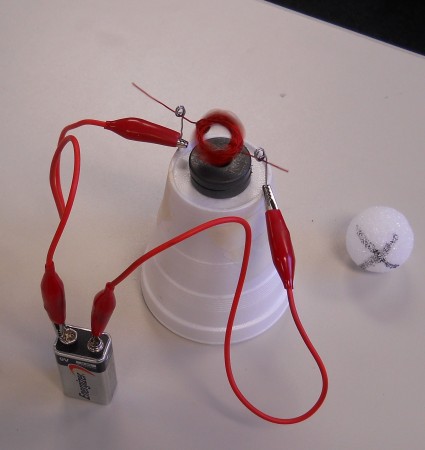
Our exercise in building simple electric motors was quite a success.
Students enjoyed doing it, even though it was challenging making the coil just right so it would spin easily. They persisted and enjoyed that wonderful eureka moment when it actually worked.
Motor Speed
One group wanted to figure out how fast the armature was spinning. Because of small imperfections inherent to hand-made parts, we found that the armatures would bounce, ever so slightly, with each rotation. So the students recorded the sound using their laptop, and then counted rotations off the recorded sound wave. I think they came up with about 10 rotations per second.
I need to check if there’s a free phone app we can use that will show the sound waveform more efficiently — Pocket WavePad seems like it might work.
Accidental arc welding
At the end, some students wanted to figure out just how fast they could get the motor running. Disdaining the online instructions, they went for more power, hooking up all the batteries they could scavenge from the other groups before I had to make them stop. They did manage to weld the insulating varnish on the coil wire to the paperclip contact before the end.
All the sparks did lead to a discussion of how arc welding works, however, which I was able to tie into the maths of transformers; cheaper arc welders (like this one) take in 20 Amps at 120 Volts, and output 70 Amps at 22 Volts.
This group did not want to stop, so I gave them permission to pass on P.E. for that one day, with a note that said they were doing some “remedial” physics. They got a kick out of that.
